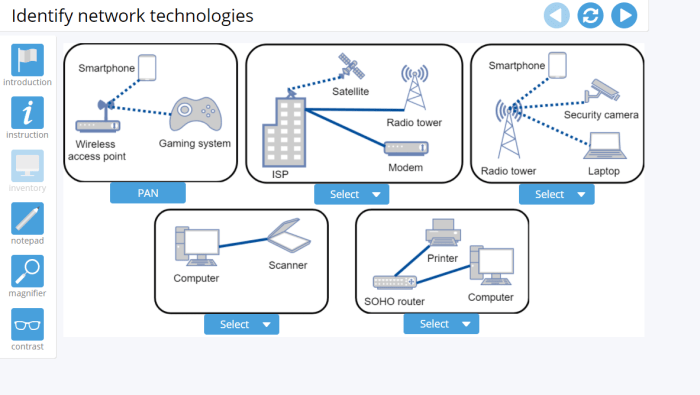Advanced hardware lab 9-2: troubleshoot mobile devices – Welcome to Advanced Hardware Lab 9-2: Troubleshooting Mobile Devices, a comprehensive guide that empowers you to diagnose and resolve hardware issues with confidence. Embark on a journey of discovery as we delve into the intricacies of mobile device hardware, unlocking the secrets to successful repairs.
In this lab, you’ll gain a thorough understanding of the specialized equipment and techniques used by professionals. From identifying common hardware problems to implementing effective repair protocols, we’ll equip you with the knowledge and skills to tackle any mobile device challenge.
Troubleshooting Mobile Device Hardware Issues

Mobile devices are ubiquitous, but they can also be prone to hardware issues. Troubleshooting these issues can be challenging, but it’s essential to be able to diagnose and resolve them quickly and effectively.
Common hardware issues encountered with mobile devices include:
- Battery problems
- Screen issues
- Camera problems
- Charging problems
- Speaker and microphone problems
- Connectivity issues
To troubleshoot these issues, follow these steps:
- Gather information about the problem.
- Inspect the device for any physical damage.
- Run diagnostic tests.
- Reset the device to factory settings.
- Contact the manufacturer or a qualified repair technician.
Here are some tips for identifying and resolving hardware-related problems:
- Look for any physical damage, such as cracks, dents, or water damage.
- Check the device’s settings to ensure that they are correct.
- Try using a different charger or cable.
- Clean the device’s charging port.
- Update the device’s software to the latest version.
Advanced Hardware Lab Equipment: Advanced Hardware Lab 9-2: Troubleshoot Mobile Devices
An advanced hardware lab is equipped with specialized equipment and tools to diagnose and repair mobile devices.
Some of the most common pieces of equipment found in an advanced hardware lab include:
- Soldering iron
- Multimeter
- Oscilloscope
- Logic analyzer
- Thermal imaging camera
- X-ray machine
Each piece of equipment has its own unique functions and capabilities. For example, a soldering iron is used to solder components onto a circuit board, while a multimeter is used to measure voltage, current, and resistance.
It is important to observe safety precautions when using these tools. For example, always wear safety glasses when using a soldering iron, and never touch the terminals of a capacitor with your bare hands.
Techniques for Troubleshooting Mobile Devices

There are a variety of techniques that can be used to troubleshoot mobile device hardware issues.
Some of the most common techniques include:
- Visual inspection
- Diagnostic tests
- Component replacement
- Software updates
- Factory reset
Visual inspection is the first step in troubleshooting any hardware issue. Look for any physical damage, such as cracks, dents, or water damage.
Diagnostic tests can be used to identify specific hardware problems. For example, a battery test can be used to determine if the battery is faulty.
Component replacement is necessary if a hardware component has failed. For example, if the screen is cracked, it will need to be replaced.
Software updates can sometimes fix hardware issues. For example, a software update may fix a problem with the camera.
A factory reset can restore the device to its original settings. This can sometimes fix hardware issues that are caused by software problems.
Case Studies and Examples
Here are some case studies of successful troubleshooting and repair of mobile devices:
Case Study 1:A customer brought in a mobile phone that would not turn on. After visual inspection, the technician noticed that the battery was not properly connected. The technician reconnected the battery and the phone turned on.
Case Study 2:A customer brought in a mobile phone that had a cracked screen. The technician replaced the screen and the phone was working properly.
Case Study 3:A customer brought in a mobile phone that was not charging. The technician cleaned the charging port and the phone started charging again.
Best Practices for Mobile Device Repair

There are a number of best practices that should be followed when troubleshooting and repairing mobile devices.
These best practices include:
- Use genuine parts.
- Follow manufacturer guidelines.
- Document all repairs.
- Test the device thoroughly after repair.
- Provide a warranty for repairs.
Using genuine parts is important because aftermarket parts may not be of the same quality as original parts. Following manufacturer guidelines ensures that the repair is done correctly.
Documenting all repairs is important for tracking purposes and for providing proof of work to customers. Testing the device thoroughly after repair ensures that the repair was successful.
Providing a warranty for repairs gives customers peace of mind and shows that you are confident in your work.
FAQ Insights
What are the most common hardware issues encountered with mobile devices?
Common hardware issues include cracked screens, battery problems, charging port malfunctions, and camera issues.
What are the essential tools for troubleshooting mobile device hardware?
Essential tools include a multimeter, soldering iron, tweezers, screwdrivers, and diagnostic software.
How do I identify and resolve hardware-related problems in mobile devices?
Follow a step-by-step process involving visual inspection, diagnostic tests, and component replacement.